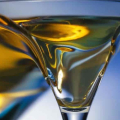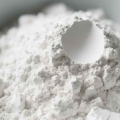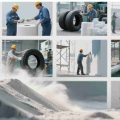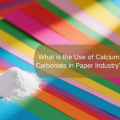- Welcome to China Calcium Carbonate Manufacturer
- WeChat:15078781000
🧾 Introduction
Calcium carbonate (chemical formula: CaCO₃) is one of the most common compounds on Earth, naturally present in rocks, shells, pearls, and the skeletons of marine organisms. It is the main component of materials like limestone, chalk, and marble, and is widely used in industrial, agricultural, pharmaceutical, and food applications.
Official name: Calcium carbonate
Synonyms: Calcite, Aragonite, Vaterite, Limestone powder, GCC, PCC
CAS Registry: 471-34-1
Molecular formula: CaCO₃
SMILES/InChIKey: Standard identifiers in chemical databases
Elemental calcium: Approximately 40% of total weight
Common forms: Powder, granules, slurry; available as GCC, PCC, nano, or coated grades
🧪 Physical and Chemical Properties
Physical Properties
Appearance: Fine, odorless white powder
Color: High-purity grades are brilliant white
Density: ~2.7 g/cm³ (depends on crystal structure)
Grade characteristics: Available as best calcium carbonate powder for high whiteness and opacity
Molecular Properties
Chemical formula: CaCO₃
Molecular weight: 100.09 g/mol
pH: 9–10 in water suspension
Molar mass: 100.09 g/mol
Stability and Solubility
Solubility in water: Slightly soluble
Enhanced solubility in presence of CO₂
Is calcium carbonate soluble in water? Not significantly unless acidic conditions are present
⚗️ Chemical Reactions and Equations of Calcium Carbonate
Calcium carbonate (CaCO₃) engages in a wide range of chemical reactions with acids, heat, water, carbon dioxide, and other compounds. These reactions are essential to geology, materials science, environmental treatment, and industrial manufacturing.
🧪 Acid Reactions
Calcium carbonate reacts with acids to produce a calcium salt, carbon dioxide, and water. This effervescent reaction is a classic lab demonstration and underpins various industrial applications.
With Hydrochloric Acid:
CaCO₃ + 2HCl → CaCl₂ + CO₂ + H₂O
With Sulfuric Acid:
CaCO₃ + H₂SO₄ → CaSO₄ + CO₂ + H₂O
With Nitric Acid:
CaCO₃ + 2HNO₃ → Ca(NO₃)₂ + CO₂ + H₂O
With Acetic Acid:
CaCO₃ + 2CH₃COOH → Ca(CH₃COO)₂ + CO₂ + H₂O
🔥 Thermal Decomposition (Calcination)
At temperatures above ~825°C, calcium carbonate decomposes into calcium oxide (CaO) and carbon dioxide (CO₂):
CaCO₃ (s) → CaO (s) + CO₂ (g)
This reaction is central to the lime industry and cement production.
🌬️ Reaction with Water and Carbon Dioxide (Carbonation)
In the presence of water and CO₂, calcium carbonate can form soluble calcium bicarbonate, explaining its solubility in natural waters:
CaCO₃ + CO₂ + H₂O → Ca(HCO₃)₂
This reversible reaction is fundamental to karst geology and boiler scale formation.
⚖️ Precipitation / Ion Exchange
CaCO₃ can also form via precipitation from ionic solutions:
CaCl₂ + Na₂CO₃ → CaCO₃ ↓ + 2NaCl
Used in lab preparation and water treatment.
🔧 Reaction with Sodium Silicate
In high-temperature industrial processes:
CaCO₃ + Na₂SiO₃ → CaSiO₃ + Na₂CO₃
Common in glass, ceramics, and building materials.
🌀 Ammonium Salt Reaction
In nitrogen recovery or fertilizer chemistry:
CaCO₃ + 2NH₄Cl → CaCl₂ + 2NH₃ + CO₂ + H₂O
🔄 The Lime Cycle
A complete industrial lime cycle includes:
Calcination:
CaCO₃ → CaO + CO₂
Hydration (slaking):
CaO + H₂O → Ca(OH)₂
Carbonation:
Ca(OH)₂ + CO₂ → CaCO₃ + H₂O
Chemical Comparisons
Calcium carbonate vs sodium bicarbonate: Both are antacids, CaCO₃ releases CO₂
Calcium citrate vs calcium carbonate: Citrate is more bioavailable; carbonate has higher calcium content
Oyster shell calcium vs calcium carbonate: Both are natural sources of CaCO₃
Absorption comparison: Calcium carbonate is better absorbed with food; citrate does not require gastric acid
🔷 Crystal Structures and Mineral Forms
Mineral Types and Characteristics
| Mineral Form | Characteristics | Industrial Use |
|---|---|---|
| Calcite | Stable, widely found, moderate hardness | Main raw material for GCC, coatings, plastics |
| Aragonite | Less stable, needle-like crystals | Biomedical fillers, marine shell derivatives |
| Vaterite | Very unstable | Research and pharma applications |
| Limestone | Sedimentary, mainly calcite | Cement, CaO, coarse fillers |
| Marble | Recrystallized calcite | Fine fillers, architectural use |
| Dolomite | CaMg(CO₃)₂ | Agriculture, metallurgy, desulfurization |
🌍 Distribution of Chinese Origin
Major Production Regions in China
| Region | Resource Type | Features |
|---|---|---|
| Guangxi (Hezhou, Pingnan) | Limestone, calcite, marble | High white GCC, major base for coatings/plastics |
| Guangdong (Lianzhou, Yingde) | Dolomite, limestone | High purity, strong downstream processing (Ca(OH)₂) |
| Hunan (Chenzhou) | Limestone, calcite | Central industrial base |
| Sichuan (Yaan, Luzhou) | Calcite, limestone | Stable quality, fit for chemical refining |
| Anhui, Jiangxi, Shandong, Henan | Dolomite, marble, limestone | Linked to ceramics, paper, metallurgy |
🧴 Chemical Classes
Categorization by End Use
Pharmaceuticals: Antacids, calcium supplements
Food additives: E170. acidity regulator, calcium fortifier
Cosmetics: Abrasives, opacifiers, pigment extenders
Pesticides: Inert filler or carrier
Polymers: Plastic fillers, reinforcement materials
📦 Calcium Carbonate Product Types
✅ Ground Calcium Carbonate (GCC)
Mined from natural calcite
Used in plastics, paints, rubber, ceramics
✅ Precipitated Calcium Carbonate (PCC)
Synthetically produced
Ultra-fine particles with high purity
Common in pharma, paper, and sealants
✅ Nano Calcium Carbonate
Nanometer-sized particles
Enhanced dispersion and mechanical performance
Used in plastics, inks, lubricants, batteries
✅ Coated Calcium Carbonate
Treated with fatty acids (e.g., stearic acid)
Improves hydrophobicity and polymer compatibility
Preferred in polyethylene (PE) and polypropylene (PP) applications
🏭 Applications and Uses
What Is Calcium Carbonate Used For?
Calcium carbonate is a versatile industrial compound with applications spanning from construction and manufacturing to food and pharmaceuticals. Its wide usage stems from its chemical stability, whiteness, alkalinity, and cost-effectiveness. Whether as a filler, functional additive, or reactive agent, it plays a crucial role in countless products and processes.
➤ Key Industrial Applications of Calcium Carbonate
Construction: Used in cement, concrete, dry-mix mortar, and road base stabilization.
Paints & Coatings: Enhances opacity, brightness, and rheology control in architectural and industrial coatings.
Paper Industry: Acts as a coating pigment and filler to improve brightness, printability, and bulk.
Plastics & Polymers: Common filler in PVC, PE, and PP to reduce cost and improve dimensional stability.
Rubber & Elastomers: Boosts tensile strength and extrusion performance.
Pharmaceuticals: Used as an antacid and calcium supplement, typically as precipitated calcium carbonate (PCC).
Food Industry: Acts as E170 food additive for calcium fortification and pH regulation.
Cosmetics: Used in toothpaste, face powders, and abrasive agents for its fine texture and mild alkalinity.
Environmental Applications: Deployed in flue gas desulfurization, wastewater treatment, and soil neutralization.

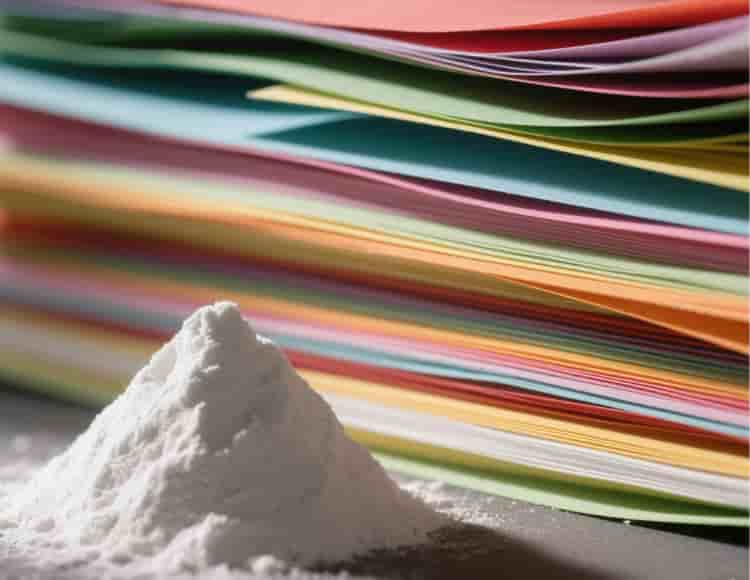

📘 Frequently Asked Questions (FAQ)
Q1: What is the difference between GCC and PCC calcium carbonate?
A: Ground Calcium Carbonate (GCC) is mechanically processed from natural limestone, while Precipitated Calcium Carbonate (PCC) is synthetically made with controlled purity and particle size.
Q2: What are the advantages of nano calcium carbonate?
A: Nano CaCO₃ provides better dispersion, higher surface area, and reinforcement in polymers, adhesives, and lubricants.
Q3: What is coated calcium carbonate and when is it used?
A: Coated calcium carbonate is surface-treated with fatty acids for improved hydrophobicity in plastic applications like PE and PP.
Q4: Can calcium carbonate be used as a food or pharma ingredient?
A: Yes, calcium carbonate is listed as E170 and is used as a calcium supplement and acid regulator.
Q5: Where is the best calcium carbonate produced in China?
A: Regions like Guangxi, Guangdong, and Anhui are top sources of high-whiteness, high-purity calcium carbonate for industrial and export purposes.
📌 Final Thoughts
Calcium carbonate is more than just a mineral—it’s a multi-functional material essential in modern manufacturing. Understanding the chemical forms, application profiles, and regional resources—especially from leading Chinese suppliers—can help buyers select the right product with confidence.
Need OEM calcium carbonate solutions or bulk sourcing?
👉 Contact Jintai to request specifications, MSDS, and container-based quotations.

